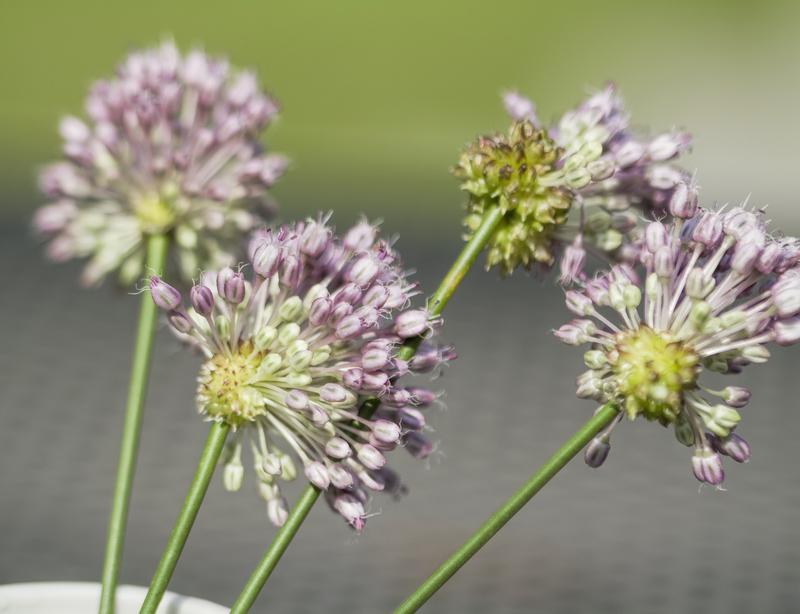Enjoy the Fruits of Your Herb Planting Skills
Posted on 17/09/2025
Enjoy the Fruits of Your Herb Planting Skills: A Comprehensive Guide
If you've ever dreamt of harvesting your own fresh basil for your pesto or snipping fragrant rosemary for your roasted potatoes, then mastering the art of herb planting is truly rewarding. Whether you have a sprawling backyard, a cozy balcony, or even just a sunny windowsill, learning to cultivate and enjoy the fruits of your herb planting skills puts fresher flavors and vibrant greenery at your fingertips.

Why Grow Your Own Herbs?
Growing herbs at home is more than just a way to cut your grocery bill. It is about infusing meals with authentic flavor, enhancing your well-being, and building a closer connection to nature. Below are some of the compelling reasons why you should embark on the journey of herb growing:
- Unmatched Freshness: Clip herbs moments before using for peak flavor and nutrition.
- Health Benefits: Fresh herbs add antioxidants, vitamins, and natural compounds to your dishes.
- Cost Savings: Say goodbye to expensive supermarket herbs that wilt quickly.
- Environmental Impact: Reduce your carbon footprint with homegrown, pesticide-free greenery.
- Therapeutic Value: Gardening is proven to reduce stress and boost your mood.
Getting Started: Choosing the Right Herbs
To fully enjoy the fruits of your herb gardening skills, selecting herbs that match your climate, cuisine, and lifestyle is essential. Here are the most popular and beginner-friendly options that thrive in most environments:
- Basil: Perfect for Italian dishes, salads, and homemade pesto.
- Mint: Refreshing in teas, desserts, and summer drinks.
- Rosemary: Aromatic and robust, ideal for meats and potatoes.
- Parsley: Versatile for garnish, sauces, and seasoning.
- Oregano: A must-have for Mediterranean flavors.
- Chives: Mild onion flavor for garnishing eggs and potatoes.
- Cilantro: Essential for Mexican, Indian, and Thai cuisines.
- Thyme: Perfect for soups, roasts, and marinades.
Factors to Consider Before Planting Herbs
- Climate: Some herbs, like basil, prefer warmer weather, while others, such as parsley, tolerate cooler climates.
- Sunlight: Most culinary herbs require at least 6 hours of sunlight daily.
- Space: Decide whether you'll plant in containers, raised beds, or directly in the ground.
- Watering Needs: Mediterranean herbs thrive on less water, while others like mint and basil need more regular hydration.
From Seed to Table: Steps for Successful Herb Planting
1. Selecting Quality Seeds or Seedlings
High-quality seeds or healthy seedlings give your herb garden the best possible start. Check for reputable seed companies or local nurseries. Read labels for germination rates and preferred planting seasons.
2. Choosing the Perfect Location
Your herbs will thrive in a bright spot with well-draining soil. Raised beds, window boxes, or even hanging baskets can be excellent choices. Make sure the spot you pick gets plenty of natural light and has good airflow to prevent mildew and pests.
3. Preparing the Soil
Herbs generally prefer a neutral to slightly alkaline pH. Amend soil with compost or organic matter before planting to ensure rich nutrients. For container gardening, use high-quality potting mix with perlite for adequate drainage.
4. Planting and Spacing
Follow the seed packet guidelines for spacing and depth. Overcrowding leads to poor air circulation and increased disease risk. A good rule of thumb is to provide 6 inches to 24 inches between herb plants, depending on their mature size.
5. Watering and Mulching
- Water herbs in the morning to minimize evaporation and reduce humidity at night when mildew thrives.
- Let the top inch of soil dry before watering again to prevent root rot.
- Mulch around your herbs with straw or bark to retain moisture and suppress weeds.
6. Pruning and Maintenance
Regular harvesting and pinching off flowers encourage bushier growth and prolong harvesting season. Remove any yellowing leaves or stems to support robust health. Watch for pests such as aphids and treat organically if possible.
Creative Ways to Use Your Homegrown Herbs
What could be more satisfying than enjoying the results of your herb growing venture? Fresh herbs elevate every meal and even enrich your home decor and wellness routines.
Culinary Delights
- Flavorful Sauces: Make pesto, chimichurri, or gremolata with an abundance of fresh basil, cilantro, or parsley.
- Herb Butters: Mash chopped herbs into butter for fresh bread, steak, or grilled vegetables.
- Infused Oils & Vinegars: Add sprigs of rosemary, thyme, or oregano to olive oil or vinegar for gourmet flavor.
- Teas and Cocktails: Fresh mint, lemon balm, or lavender makes soothing teas and vibrant cocktails.
- Salads and Garnishes: Snip chives, basil, or dill over salads, soups, or pastas for a fresh pop.
Herbs for Well-Being and Home Use
- Natural Remedies: Peppermint or chamomile tea for digestion and relaxation.
- Herbal Bath Bundles: Add sprigs of lavender, rosemary, or sage to your bath for a spa-like experience.
- Potpourri and Sachets: Dry and blend herbs to create fragrant sachets or potpourri for drawers and closets.
Preserving and Storing Your Herbs
When your herb plants are thriving, you might find yourself with more than you can use fresh. Fortunately, there are tried and true methods to store your harvest and enjoy your homegrown herbs year-round.
Drying Herbs
- Tie herbs in small bundles and hang them upside-down in a warm, dry, and dark place.
- Alternatively, use a dehydrator or oven set on the lowest temperature.
- Once dry, crumble and store in airtight containers, labeled by type and date.
Freezing Herbs
- Chop herbs and place in ice cube trays. Cover with olive oil or water and freeze.
- Pop out cubes as needed for soups or sautes.
Making Herb Pastes
- Puree herbs with olive oil, garlic, or nuts (as in pesto) and store in the refrigerator or freezer.
Troubleshooting Common Herb Growing Problems
Every gardener faces challenges, but you can overcome them and still enjoy the rewards of your herb planting expertise! Here are the most common issues and their solutions:
- Yellowing Leaves: Check for overwatering or poor drainage; amend the soil and adjust your watering routine.
- Pest Infestations: Use neem oil, insecticidal soap, or introduce beneficial insects like ladybugs.
- Leggy Growth: Herbs need enough light! Move them to a sunnier spot and pinch back stems regularly.
- Poor Flavor: Herbs stressed by nutrient deficiencies or crowding may lack aroma. Fertilize lightly with organic compost and ensure proper spacing.
Tips for Advanced Herb Planters
Once you've mastered the basics, you can experiment with more complex varieties and creative garden designs. Here's how to further enjoy the fruits of your herbal planting prowess:
- Companion Planting: Grow herbs like basil and tomato together for natural pest control and enhanced flavor.
- Herb Spirals: Create a raised, spiral-shaped garden for efficient use of space and striking visual appeal.
- Rare Herbs: Try planting exotic varieties like shiso, lemon verbena, or Vietnamese coriander for unique tastes.
- Indoor Hydroponics: Equip your kitchen with a hydroponic garden for year-round fresh herbs.
Embrace a Greener, Tastier Lifestyle
There's true joy in being able to slip outside and gather a handful of fresh herbs for your cooking, tea, or wellness. Your efforts not only beautify your space and improve your meals, but they also strengthen your bond with the natural world. Whether you're just starting out or are a seasoned green thumb, the pleasure of growing, harvesting, and sharing your bounty never fades.
Let your home be filled with the aroma of rosemary, mint, and basil. Enjoy the fruits of your herb planting skills by incorporating homemade touches into every meal, every day. Your kitchen, your garden, and your life will be all the richer for it!

FAQs for Herb Gardeners
- What is the easiest herb to grow for beginners?
Basil, mint, and chives are all forgiving and resilient, thriving indoors or out. - How often should I water my herb plants?
Water when the top inch of soil is dry, typically every 2-3 days for most herbs. - Can I grow herbs indoors year-round?
Yes! Use a sunny window or invest in grow lights to ensure success during shorter winter days. - How do I keep my herbs bushy and productive?
Pinch back new growth and remove flower buds to encourage more leafy shoots.
Conclusion: Unlock the Joy of Homegrown Herbs
Nothing matches the flavor, fragrance, and satisfaction that comes from enjoying the fruits of your herb planting skills. Start small, dream big, and experiment with different varieties and uses. Soon, your kitchen and your family will savor the results of your dedication and creativity, one delicious meal at a time. Experience the difference that homegrown herbs make - because the best gardens are those you can taste!

